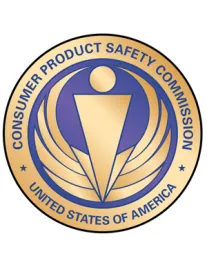Current thinking from public health experts is that COVID-19 will affect the American economy for several months. But during this period businesses still have responsibilities to their brands and obligations under law. And unlike during last year’s government shutdown, the pandemic has forced government agencies like the U.S. Consumer Product Safety Commission (CPSC) to operate differently, but it hasn’t closed its doors. For that reason, businesses will still have legal obligations and face the possibility of CPSC enforcement efforts.
Here are three steps companies can take to protect their brands and reduce the risk of CPSC enforcement.
-
Manage Supply Chains
Of course, it’s always important to keep an eye on your supply chains to make sure errors, substitutions, or other problems upstream don’t creep into your products. Unfortunately, supply chains vary and may be more unstable than usual right now.
With factories, warehouses, and other key supply network nodes limited or shut down, you or your suppliers may be lacking key components for your products. Employees’ absences or relocations may be reducing capacities or forcing people and systems into unfamiliar roles. These factors increase the possibility of errors.
Even if your suppliers are still able to meet demand, their suppliers may not be. They may be compelled to substitute. Work closely with suppliers to understand what challenges they face and what steps they’re taking to address them.
If disruptions are preventing your suppliers from meeting demand, you may need to explore substitution opportunities. As you look for, evaluate, and onboard new suppliers, try not to let the urgency of the moment crowd out due diligence. Try to vet potential suppliers as you would during more typical times. And as always, “trust but verify” applies: In-person audits may be a challenge, but other tools – such as random sampling and increased end-of-line testing – can help guard against latent problems.
The right contract terms should address all of these supply chain issues. They may provide substitution rights for you or your suppliers, they may have “force majeure” provisions that protect your suppliers in the event of significant disruptive events, and they may require notifications up or down the supply chain. Experienced counsel should review your contracts to ensure that you are protected, and if you need to sign up new suppliers, how you can be better protected going forward.
-
Verify Communication and Information Plans
The CPSC has announced that public briefings and meetings with staff or commissioners may be postponed or cancelled but that “Companies are reminded of their statutory obligation to report under Section 15(b) of the Consumer Product Safety Act.”
To meet these obligations, companies should try hard to keep information flowing. The CPSC presumes that a company collectively knows any information received by any employee “who may reasonably be expected to be capable of appreciating the significance of the information,” and that any safety-related information will reach the CEO or the employee responsible for complying with the CPSA within five business days. Given the size and complexity of many modern businesses, that timeline is short under the best of circumstances, and the current environment makes it even harder, but the CPSC is unlikely to revise its estimate of how businesses should communicate.
Further, after you have filed an initial report, your obligations may not end there. The CPSC may follow up with a full report request that will generally include more than 25 questions and a two-week turnaround. Companies need to coordinate across business functions to respond fully and in a timely manner – another challenge in this environment.
Where companies who have reported are facing difficulties in coordinating responses to full report requests or follow-up questions, the agency is more likely to be understanding, but companies will need to be candid about their limitations and request extensions where necessary. Seek the guidance of experienced counsel to help bridge any gap between the agency’s expectations and your capacities.
-
Know Who’s Responsible and Where They Are
Companies should also consider how they will make decisions about product reporting. Pulling together a quick meeting to review a potential safety concern will be more difficult as information sources and decision-makers face operational challenges, and the urgency of a particular matter may not be conveyed effectively over email or by phone. The risk of a safety decision being delayed because it’s not clear who should make it or how is likely to be higher than in normal operations.
Be mindful of your safety and compliance plans and policies for possible decision-making bottlenecks may be and develop contingency plans. There likely isn’t bandwidth for the full mock-recall exercises we’d normally recommend in developing a safety plan, but companies should ask teams to think about who would need to be involved in a safety decision and what the contingencies are. If one senior leader is charged with the final decision on whether or not to report a potential hazard, make sure key stakeholders have multiple ways to get in touch with that leader and identify other leaders who could act if necessary. These elements should be in any robust safety plan regardless, but the added organizational pressures of the current environment underscore their value.
The disruptions caused by the pandemic may linger for months or years. Companies should keep in mind the legal and regulatory responsibilities they face and develop strategies to meet those responsibilities. These efforts will be key to reducing the risk that the CPSC will come calling





 />i
/>i
